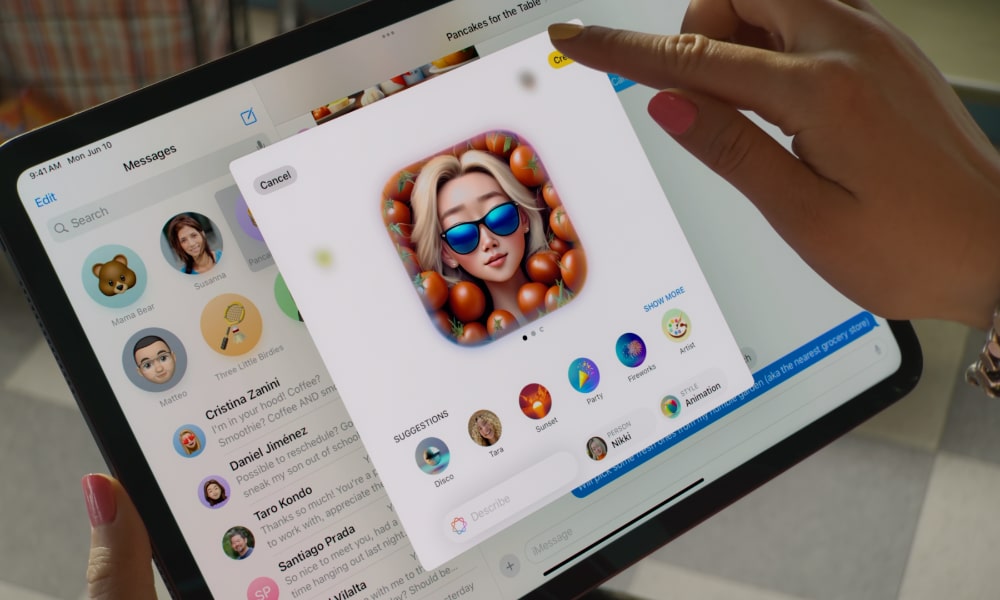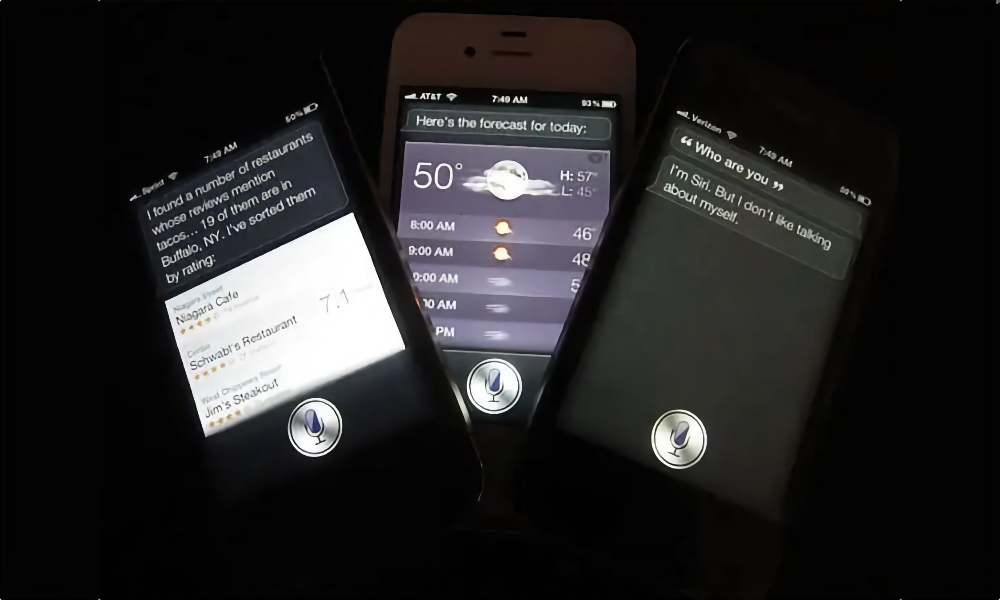Apple’s Siri Delays May Be More Serious Than We Thought

Toggle Dark Mode
It’s been a whirlwind of uncertainty for the future of Apple Intelligence over the past few weeks, with features that were supposed to arrive this spring now being delayed into an uncertain future. However, it also turns out that this isn’t any ordinary delay, but rather an example of Apple overpromising and underdelivering that’s nearly unprecedented — at least in recent years.
To recap, Apple jumped hard onto the AI train last June, unveiling “AI for the rest of us” during its annual Worldwide Developers Conference (WWDC). There was no arguing that Apple was late to the game here, but its Apple Intelligence presentation sparked a lot of confidence that it was ready to make a big push into AI and catch up quickly.
Although Apple presented an entire collection of new iOS 18 features under the single umbrella of “Apple Intelligence,” it encompassed several elements, including Writing Tools, Image Playground, Genmoji, Image Wand, intelligence summarizations of notifications, and — perhaps most significantly — a dramatic upgrade to Siri that would turn Apple’s voice assistant into a true assistant by letting it understand personal context and ferret these things out.
While Apple has mostly delivered on nearly all of these features (summarization of notifications has turned out to need more work), the one missing element is the one that most folks have really been waiting for: the new and improved Siri. Compared to that, everything else in Apple Intelligence is relatively pedestrian — a package of AI tools that’s not as impressive as many expected.
After all, it’s not like writing tools and generative AI imagery hasn’t been done to death already. Building it into an iPhone may be fun, but it’s hardly groundbreaking. Apple’s promise of on-device processing is intriguing for those who are more privacy-conscious, but the popularity of ChatGPT and other AI tools demonstrates that most people don’t care as much as Apple believes they do.
On the other hand, Siri has been a longstanding disappointment for many Apple fans. It’s hard to believe that Apple’s voice assistant had a three-year lead over Alexa, and predates Google’s Gemini and ChatGPT by a decade. Whatever Apple did with Siri, it completely squandered that lead by leaving the project to rot on the vine after Steve Jobs died and senior VP Scott Forstall left the company.
Apple’s late co-founder and software boss were champions of the voice assistant, and nobody seemed to want to pick up the ball and run with it until years later, when Apple hired AI expert John Giannandrea away from Google and promoted him to Senior VP of a new Machine Learning and AI Strategy division. Giannandrea restructured the Siri team to focus on longer-term research and development, and began looking for new leadership, giving us a spark of hope that the voice assistant might finally grow up into something useful.
Sadly, it’s been six years since that initiative began — nearly half of Siri’s life — and it doesn’t seem to be any closer to realizing its potential. If anything, Apple’s decision to fuse Siri with ChatGPT in iOS 18 has made it even dumber. As I wrote in January:
On its own, ChatGPT is brilliant. By itself, Siri is dumb, but it knows it. However, putting the two together has resulted in a digital version of the Dunning-Kruger effect.
Before iOS 18, Siri knew when it couldn’t answer a question, so it wouldn’t even try. Instead, it would offer up a collection of web links. While that wasn’t ideal, it was a fair response. However, as Daring Fireball’s John Gruber highlighted in January, the iOS 18 version of Siri will happily spout out confident but incorrect answers to queries as simple as finding out who won a given Super Bowl. That’s not obscure information, yet Siri consistently gets it wrong.
As disconcerting as that was, there at least seemed to be a light at the end of the tunnel. While reports from reliable sources like Bloomberg’s Mark Gurman had predicted only weeks after WWDC that Siri’s real improvements wouldn’t come until iOS 18.4, that update was due in April.
Finally, our long Siri nightmare might soon be over — or so we thought.
Then came a report in mid-February that Apple was having trouble smartening up Siri and would be pushing it off until at least iOS 18.5. Three weeks later, Apple gave us the official word that it wasn’t going to make the cut for iOS 18-dot-anything.
We can’t blame you if that announcement didn’t fill you with any confidence, but it’s actually bleaker than we feared.
In one of the most scathing posts he’s ever directed at Apple, John Gruber suggests that the new Siri may not even exist.
In an essay aptly titled, Something Is Rotten in the State of Cupertino, Gruber doesn’t hold back on criticizing Apple, while also blaming himself for missing what should have been the signs. Of course, we all did, having been caught up in Apple’s AI hype. I’ve been watching and covering Apple for nearly as long as Gruber has, and it never occurred to me to think of the new Siri as vaporware. Gruber was much closer to the action, but he also missed the signs that should have been obvious in retrospect.
Apple never once demoed the new Siri in any form outside of a scripted, pre-recorded video presentation — and it still hasn’t shown us anything tangible even now.
Gruber aptly describes four “stages of ‘doneness’ or ‘realness’ to the things that Apple announces, ranging from those that its representatives will demo live and in person in front of the media (level 1) to those that actually ship to customers (level 4). In between are features that members of the media can go hands-on with in controlled circumstances (level 2), and features released in beta (level 3).
Most of Apple’s AI features fit into level 1. Following the WWDC presentation, Apple reps showed off Writing Tools, Image Playground, and the other things that have almost all reached stage 4 — being fully available in iOS 18.3 (systemwide Priority Notifications are in the iOS 18.4 betas, which puts them at stage 3).

To put some more context around this, the original iPhone fit into the stage 2 category in 2007. Only hours after Steve Jobs unveiled it on stage, members of the media were able to go in for private, scheduled demos where Apple’s Steve “Joz” Joswiak and his posse would show it off in person. We weren’t allowed to actually hold it, and not every app was functional at that point, but we could poke at it while Joz held it in his hand, and it worked well enough to be impressive.
Where did the more personalized Siri fit in? Well, as Gruber points out, those features tuned out to be “bullshit.”
There were no demonstrations of any of that. Those features were all at level 0 on my hierarchy. That level is called vaporware. They were features Apple said existed, which they claimed would be shipping in the next year, and which they portrayed, to great effect, in the signature “Siri, when is my mom’s flight landing?” segment of the WWDC keynote itself
John Gruber
While Apple could have gotten a pass for skipping this at WWDC, it continued to promote the feature during its iPhone 16 launch in September — albeit with only a 40-second blurb — yet still had nothing to show the media three months after it first announced it.
That was when we all should have started to scratch our collective heads, but nobody ever thought to ask why this particular Emperor had no clothes. Even Gurman, who forecasted it wouldn’t arrive until iOS 18.4, never pointed out how Apple had nothing to show us beyond a bunch of talk and a scripted video made up of prepared questions and screens likely created by Apple’s art department, not their software engineers.
However, the real problem is that, as Gruber points out, Apple still has nothing to show us:
Last week’s announcement?was, if you think about it, another opportunity to demonstrate the current state of these features. Rather than simply issue a statement to the media, they could have invited select members of the press to Apple Park, or Apple’s offices in New York, or even just remotely over a WebEx conference call, and demonstrate the current state of these features live, on an actual device. That didn’t happen. If these features exist in any sort of working state at all, no one outside Apple has vouched for their existence, let alone for their quality.
John Gruber
Although others, like Gurman, have been told Apple is testing some of these capabilities internally, it’s clear they’re nowhere near ready to be seen by anyone outside of Apple Park. Even reports that Apple has employees testing its new home hub in their own homes doesn’t mean those devices are equipped with any of these key Siri improvements.
Gruber rightly questions how anyone in the upper echelons of Apple could have allowed the new Siri to be presented so confidently. It’s not hard to understand why there may have been those who wanted to “show something that only Apple can do,” but Tim Cook’s choice to green-light that (and a call like this could have only been made by Cook himself) has cost Apple much of its hard-fought credibility.
The company may regain some of that if it can produce tangible results in iOS 19. Still, it seems that Siri hasn’t yet had its “MobileMe moment” — the time when late-CEO Steve Jobs brutally confronted the MobileMe development team and cleaned house.
Apple reportedly brought in some big guns earlier this year, appointing its most highly regarded troubleshooter, veteran Kim Vorrath, to right the toppling ship by “impos[ing] more discipline on the effort.” Maybe that’s the point Apple realized that it had been promoting vaporware and had better get its act together, but we’ll have to see whether it turns out to be a question of “better late than never” or if it’s simply too late to turn things around.










